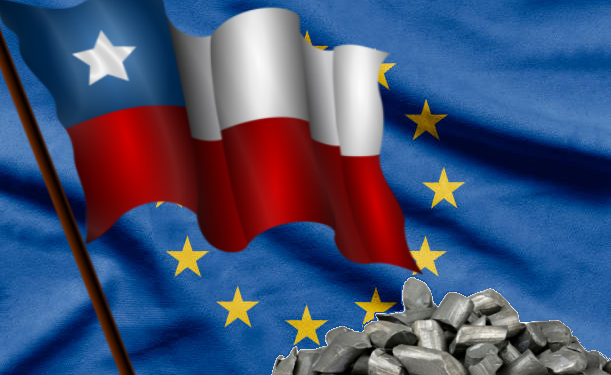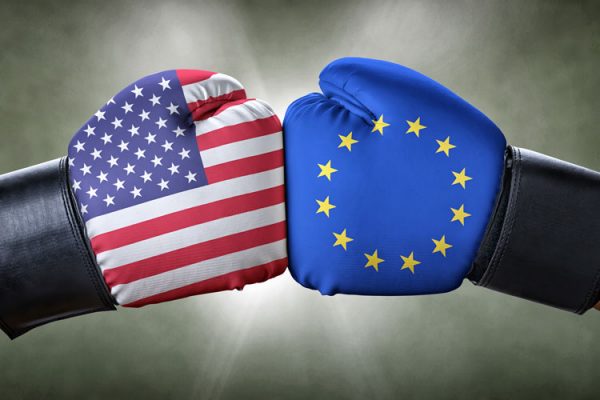Brussels – Duty elimination, access to raw materials and protection of geographical indications: These are some of the points of the interim trade agreement between the European Union and Chile (Interim Trade Agreement, ITA), which, signed in December 2023, became effective Feb. 1 after ratification by the South American country. For Brussels, the text is “of fundamental geopolitical importance,” also in light of recent statements and actions by U.S. President Donald Trump, and will “strengthen the competitiveness of companies on both sides while providing a shared platform for the development of our net-zero economies.” Chile is the EU’s third-largest trading partner in Latin America, and EU Trade Commissioner Maros Sefcovic said he is “confident that economic operators on both sides will benefit” from such an agreement, which “will help us diversify our supply chains while creating new opportunities for our companies, including SMEs.”
At the centre is the EU-Chile trade and investment relationship. There are seven elements: elimination of tariffs on 99.9 per cent of EU exports and a level playing field for EU goods in the Chilean market; the assurance of “a more efficient and sustainable flow of raw materials and derived products;” the inclusion of an Energy and Raw Materials chapter “which will promote investment and provide the EU with a steady, reliable, and sustainable access to essential raw materials such as lithium, copper, and clean fuel such as hydrogen, crucial for the transition to a green economy, while giving Chile all the policy space it may need to pursue its industrial policy goals.” The text plans to make it “easier for EU companies to provide their services in Chile, including in terms of deliveries, telecommunications, maritime transport and financial services”; to “ensure that EU investors in Chile are treated in the same way as Chilean investors;” to “improve access for EU companies investing in and bidding for public contracts in Chile, the fifth largest economy in Latin America,” and, finally, to “ensure that both EU and Chilean small businesses take full advantage of the opportunities offered by the agreement.”
The commission pointed out that, in addition to these seven aspects, there is “an ambitious chapter on trade and sustainable development (TSD), which confirms the parties’ commitment to International Labor Organization (ILO) standards and the Paris Agreement on climate change;” “a chapter on trade and gender, a first in an EU trade agreement, which includes commitments to eliminate all discrimination against women,” and “a chapter on sustainable food systems, also a first in an EU trade agreement, to make food supply chains more sustainable and resilient.” Moreover, the text “safeguards intellectual property rights, including with strong copyright provisions,” and “protects a total of 234 typical European and Chilean food and beverage products (geographical indications), with the possibility of adding more in the future.”
Finally, it should be pointed out that ITA is one of two parallel instruments underpinning the broader modernised EU-Chile agreement, which, negotiated between 2017 and 2022, has remodelled the association agreement in force since 2003. The two components are the Advanced Framework Agreement (AFA)—with the political and cooperation pillar and the trade and investment pillar being subject to ratification by all member states—and ITA, which covers only those parts of the AFA’s trade and investment pillar that are the exclusive competence of the EU. ITA is now in force but will cease to exist and will be replaced by AFA once all EU countries have ratified the advanced framework agreement.
English version by the Translation Service of Withub


![In primo piano il primo ministro sloveno Robert Golob (sinistra) e il presidente francese, Emmanuel Macron (destra), in occasione del vertice informale dei capi di Stato e di governo dell'Ue, dedicato alla difesa ma con la questione dazi Usa al centro [Bruxelles, 3 febbraio 2025]](https://www.eunews.it/wp-content/uploads/2025/02/euco250203-350x250.png)
![Il presidente di Confcooperative, Maurizio Gardini [Bruxelles, 29 gennaio 2025. Foto: Emanuele Bonini per Eunews]](https://www.eunews.it/wp-content/uploads/2025/01/gardini250129-350x250.jpg)




![La presidente della Bce, Christine Lagarde, nell'Aula del Parlamento europeo [Strasburgo, 10 febbraio 2025]](https://www.eunews.it/wp-content/uploads/2025/02/lagarde-aula-120x86.png)

